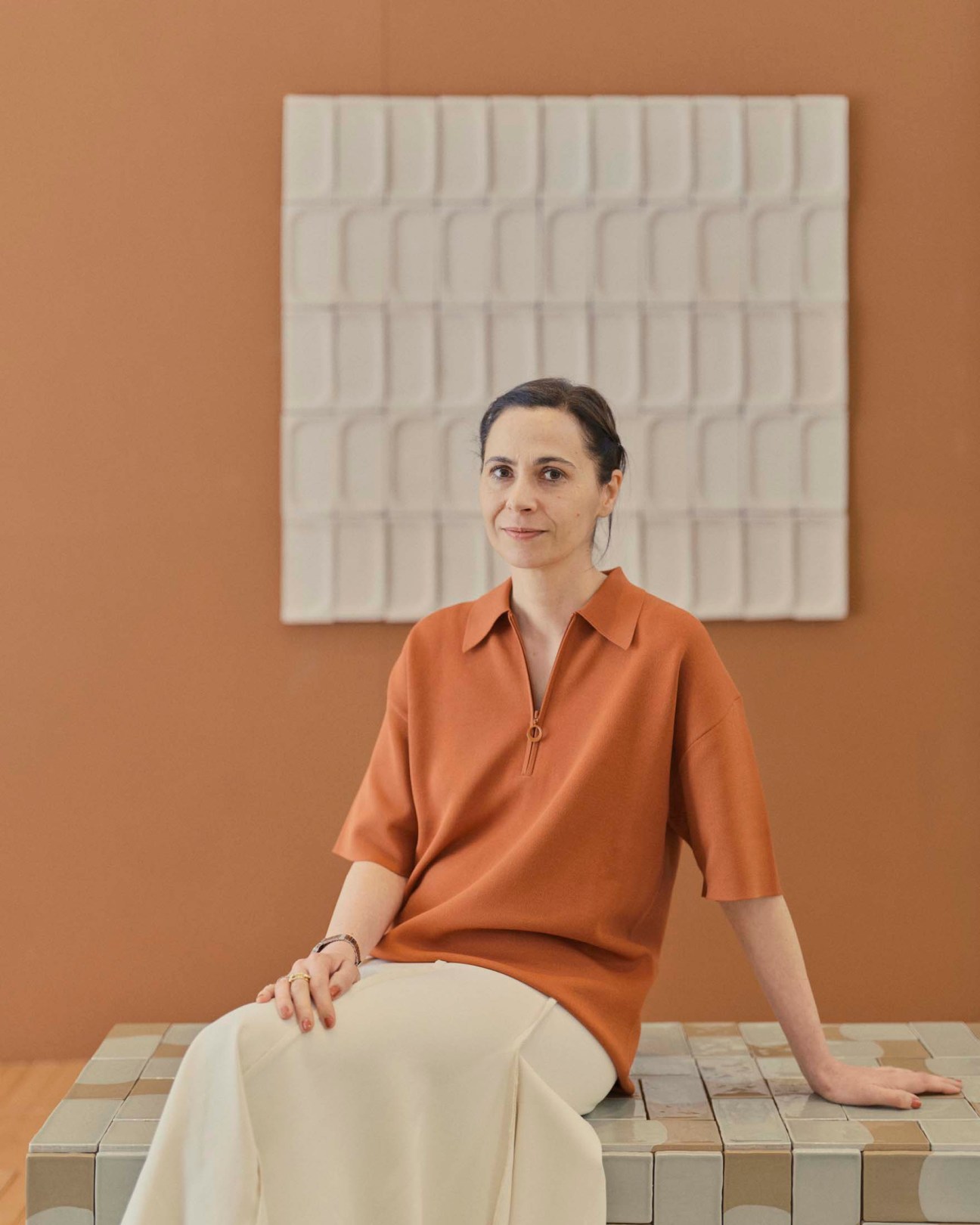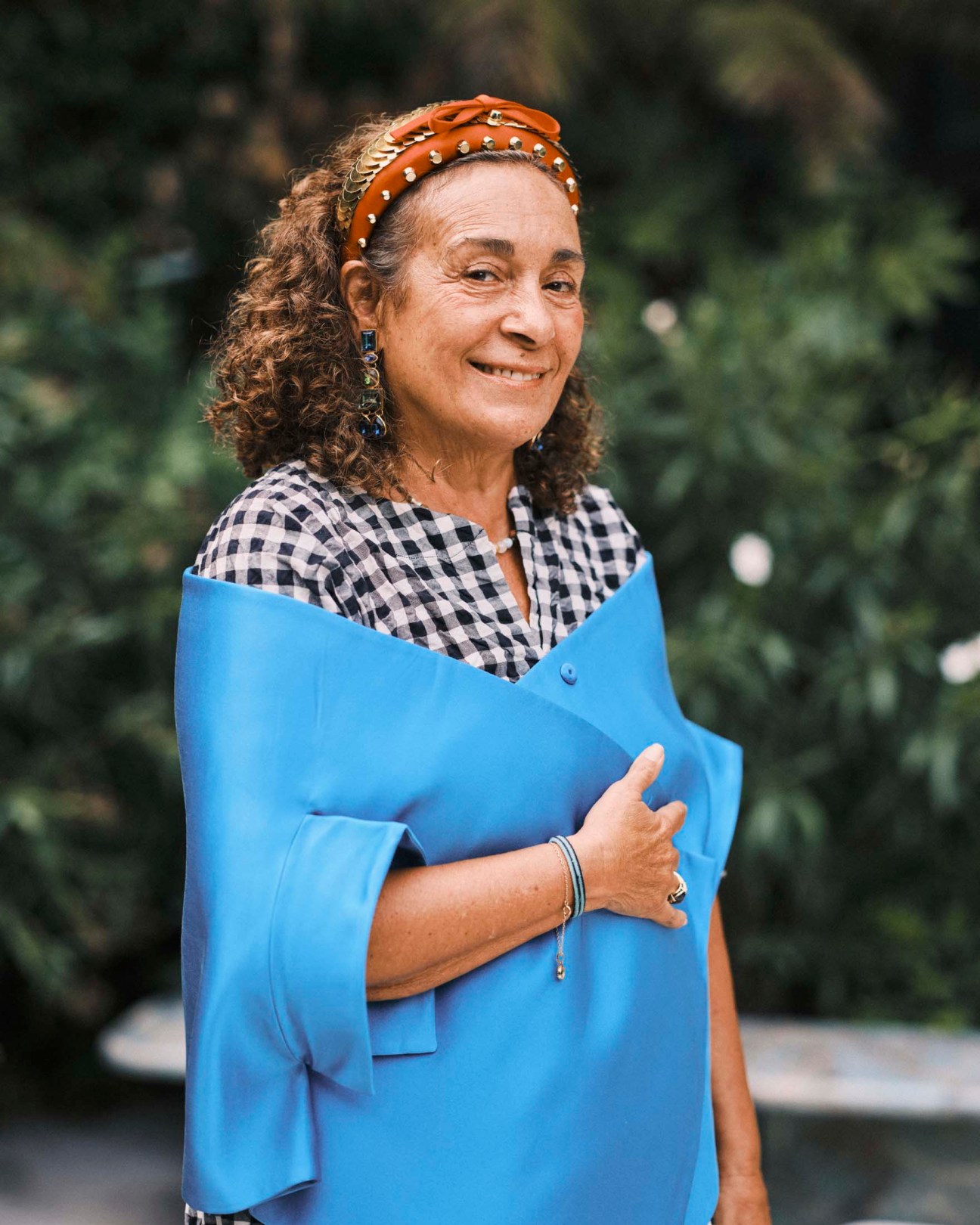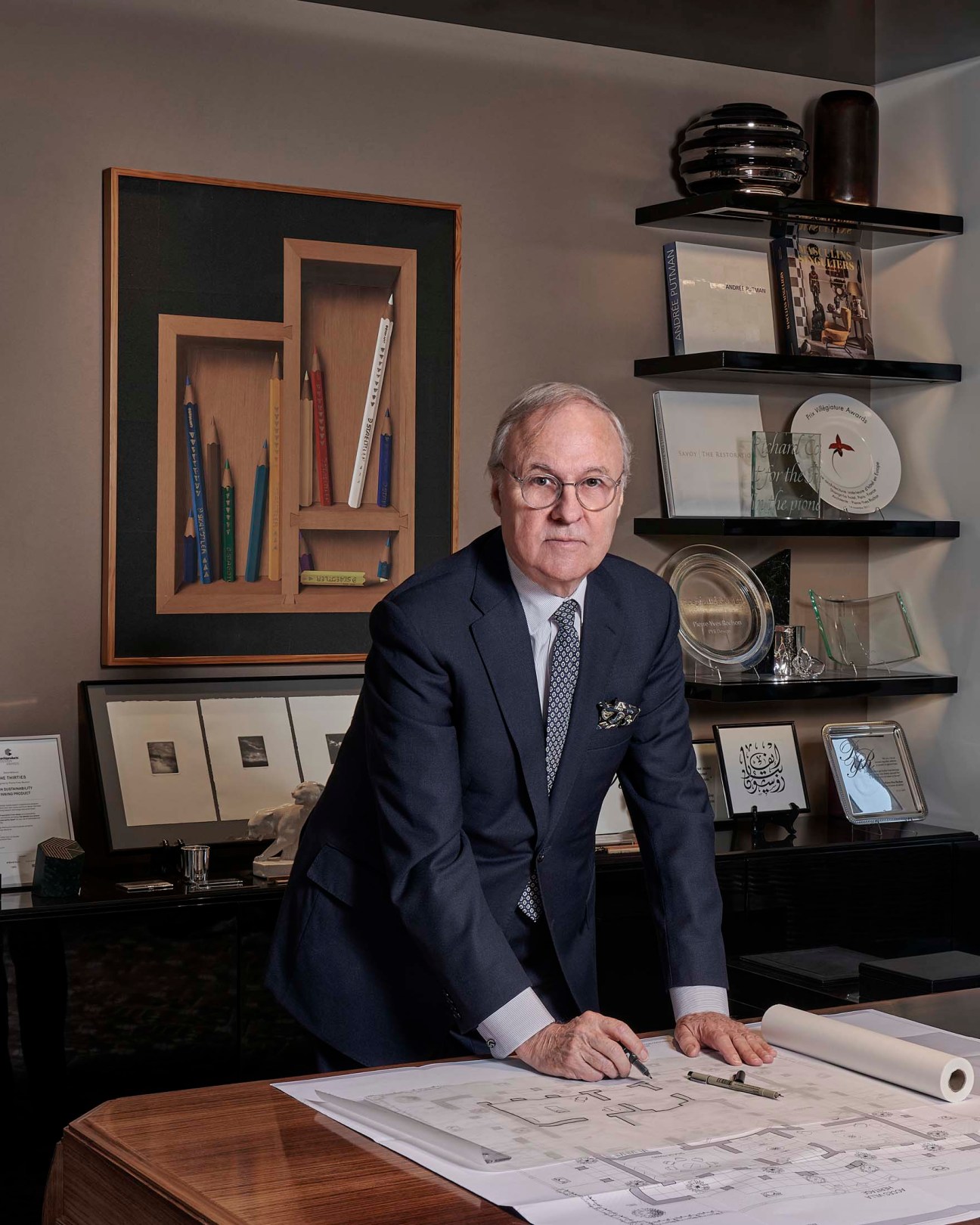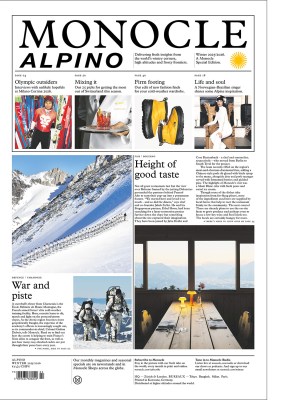Five creative forces shaping the worlds of architecture and design
From a designer honing Nigeria’s modern craft legacy to a pioneering Milanese gallerist, our interviewees share their thoughts about their work and this year’s Salone del Mobile.
1.
The architect
Cristina Celestino
Milan

Cristina Celestino is the founder of her namesake design studio, established in 2013. Known for work that is playful and practical, often referencing geometry and rooted in material innovation, the Milan-based architect has collaborated with a host of household names. Partners have included fragrance brand Diptyque, luxury fashion powerhouse Fendi, and, in 2025, outdoor furniture specialists Ethimo. She tells us how her style shines when working with different brands.
How important is Milan to your work?
It’s the starting point of my work and where I discovered my passion for interiors and design. Everything shifted for me when I moved to Milan. If you’re creative, everything in the city is about design. You end up meeting a lot of people involved in design, such as stylists and photographers. There is also the Triennale di Milano; they all of them make it easy to focus on your passion.
You are launching a collaboration with lighting brand Moooi during Salone del Mobile. Tell us more…
The lighting references the Venetian glass chandelier. The archetypal shape links to the geometrical shape of Luca Pacioli, who was a mathematician during the Renaissance period. It’s made out of methacrylate, a material that seems like glass at first glance and reflects the light in a special way.
Is there a link that runs through all your projects?
We don’t force our design to fit the brand we work with. Instead, we research and try to understand how to match the brand without changing our identity. We aim to come up with a new piece that, in some way, differs from the others on the market, is commercial and offers some personality.
2.
The designer
Nifemi Marcus-Bello
Lagos

Lagos-based Nifemi Marcus-Bello is a creative force, shaping Nigeria’s design narrative with his distinctive geometric and colourful creations. His design office, Nmbello Studio, focuses on craftsmanship: “I decided to start making handmade pieces as much as possible,” he tells Monocle. The designer’s talent lies in his ability to synthesise diverse influences. It’s an approach that manifests in a range of object typologies, garnering him recognition from the likes of the Hublot Design Prize, the Loewe Foundation Craft Prize and the Monocle Design Awards in 2023.
In 2025, Milan Design Week is also high on his priority list. “Salone del Mobile is where like-minded people come together to discuss the future of design,” he says. As corny as that sounds, that’s what’s on everyone’s mind and they are all diving into that conversation.” We catch him prior to the event.
Why is design a powerful way of telling stories?
I always wanted to be an artist before becoming a designer. What I love about art is its narrative and the power of storytelling. In some cases, especially the way I was taught, storytelling is treated as an afterthought, or even as something that shouldn’t be part of the design process. But for me, design is a powerful medium precisely because objects are easier to digest. Everyone interacts with objects, but not everyone interacts with art.
What is the temperament of design for you right now?
It’s about understanding design from a cultural standpoint. We live in a global village, but people interact with their daily lives in completely different ways. I think it’s important to consider how we can design objects that enhance everyday experiences based on specific geographical spaces.
How would you like to see this idea reflected across the design community?
I’d like to see a stronger ethnographic approach to design, as it seems to be disappearing. Everything looks and feels the same, people are telling the same stories and trying to solve the same problems. But our problems are not the same. It’s about designing with that in mind.
3.
The gallerist
Nina Yashar
Milan

Nina Yashar, one of Milan’s most revered design curators, founded Nilufar Gallery in 1979, pioneering a rediscovery of 20th-century Italian design. Through her gallery space on Via della Spiga and warehouse-like Nilufar Depot, she champions both established masters and emerging talents, creating a dialogue between vintage and contemporary pieces. Her exhibitions, renowned for their theatrical staging, have redefined our approach to presenting design. Here, she discusses the 10th anniversary of the Depot and what she dubs her “new gold”.
What can you tell us about your upcoming exhibition at Milan Design Week?
Silver Lining is an exhibition based on metal. It was designed by Fosbury Architecture collective, a Milanese firm that is really aligned with the Nilufar philosophy: the relationship between heritage and contemporary. I have always been fascinated by the duality of metal; it’s something that balances strength and vulnerability. The raw material becomes different in the hands of the artisan. Over the past five or six years, the market has been dominated by brass and bronze. I wanted to define my new gold: silver.
Nilufar Depot is celebrating its 10th year in Milan. How does it continue to inspire you?
Looking back at all of the different exhibitions that I have worked on over the past 10 years, I realised that I treated Nilufar Depot as a platform for dialogue, experimentation, conversation and cross-generational exchange. At Milan Design Week, I will exhibit pieces by talented new creatives and people who I have worked with for many years. They are all inspired by 1970s styles. Take, for example, Italian architect Gio Ponti, French designer Audrey Large and Brussels and Antwerp-based studio Destroyers/Builders.
How do industry events such as Salone del Mobile contribute to Milan’s creative life?
For me, Salone is a platform where I can learn and discover, sometimes through
an object or a new designer. It’s a melting pot of different conversations, techniques and narratives. Over the past few years an increasing number of foreigners have moved to the city, which has given it another kind of power. Milan is now a cultural hub that connects the entire creative world, not only in design but also in fashion and art. Creativity is endless when all these different disciplines meet.
4.
The interior designer
Pierre-Yves Rochon
France

For more than 45 years, French interior designer and decorator Pierre-Yves Rochon has designed interiors for a variety of prestigious clients. These include hotels such as the Waldorf Astoria and the Ritz-Carlton, as well as the Michelin-starred restaurants of chefs Joël Robuchon and Alain Ducasse. Rochon is known for his work creating spaces that transcend trends, embodying a sense of timeless elegance and cultural depth. For this year’s edition of Salone del Mobile, he created Villa Héritage, an installation celebrating his vast experience in luxury interior design.
How do you approach heritage in your designs?
I try not to be influenced by fads because I see them as a moment when the majority of people are thinking the same thing. Heritage is different. It’s not nostalgia – it allows you to pick and choose influences that speak to your sensitivity.
Can you tell us about your installation, ‘Villa Héritage’, inside Salone del Mobile?
At Salone, visitors don’t necessarily visit the so-called “classical-style” halls as much as those dedicated to contemporary pieces, which is a shame. The idea is to show how different periods of Italian architecture and interior design, as represented by Salone’s exhibitors, can coexist. In creating Villa Héritage, we chose the most beautiful pieces, be it lighting or furnishings, and combined them with music and scents to create a more immersive experience. The goal was to design a space where light, texture and sound came together to elicit an emotional response from the viewer.
What do you hope that visitors will take away from ‘Villa Héritage’?
I hope that they will reflect on the idea of transmission, of how the past informs the present and allows us to imagine the future.
5.
The CEO
Giovanni Anzani
Brianza

Poliform, under the stewardship of Giovanni Anzani and his cousins Alberto and Aldo Spinelli – the company’s second generation – is a brand renowned for its comprehensive range of custom-made systems and luxury furnishings. Established in 1942, the Brianza-based brand has retained a dedication to high-end craftsmanship while also exporting Italian quality to the world. Anzani tells us his ambitions for 2025.
What are Poliform’s priorities for 2025?
From an economic perspective, our presence in international markets continues to grow. In 2023, for instance, we recorded a 9 per cent increase in sales turnover, reaching a figure of approximately €256m. This success is the result of our constant dedication to innovation and quality, and we are determined to continue on this growth trajectory in the future. China is gradually recovering, Germany and France will find a new balance, and there is a wealth of products heading to the United States.
How does Poliform balance its past and present?
Our most valuable assets are its cultural heritage and technological know-how. With unlimited creativity and expertise inherited from the tradition of Brianza, the best furniture district in the world, combined with cutting-edge know-how, Poliform can meet the needs of an international audience while maintaining a typically artisanal approach.
How will Poliform look to grow in the future?
We’ll continue to focus on a design concept of “Poliform Home” in which each component [of our collection] is stylistically coherent. It’s a “global project” in which the versatility of our modular systems can be fashioned to suit any architectural situation.


